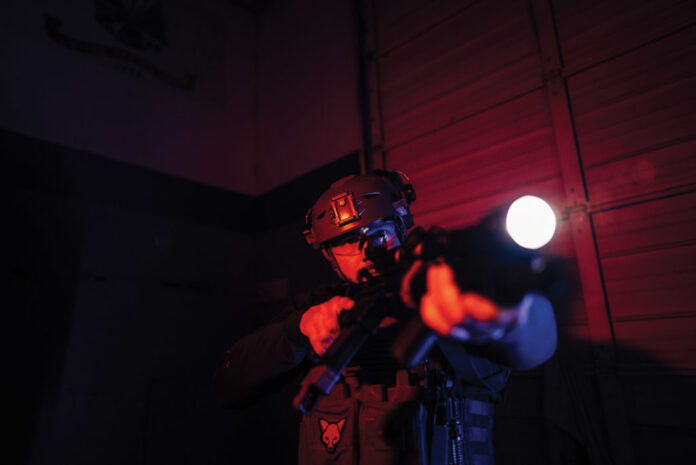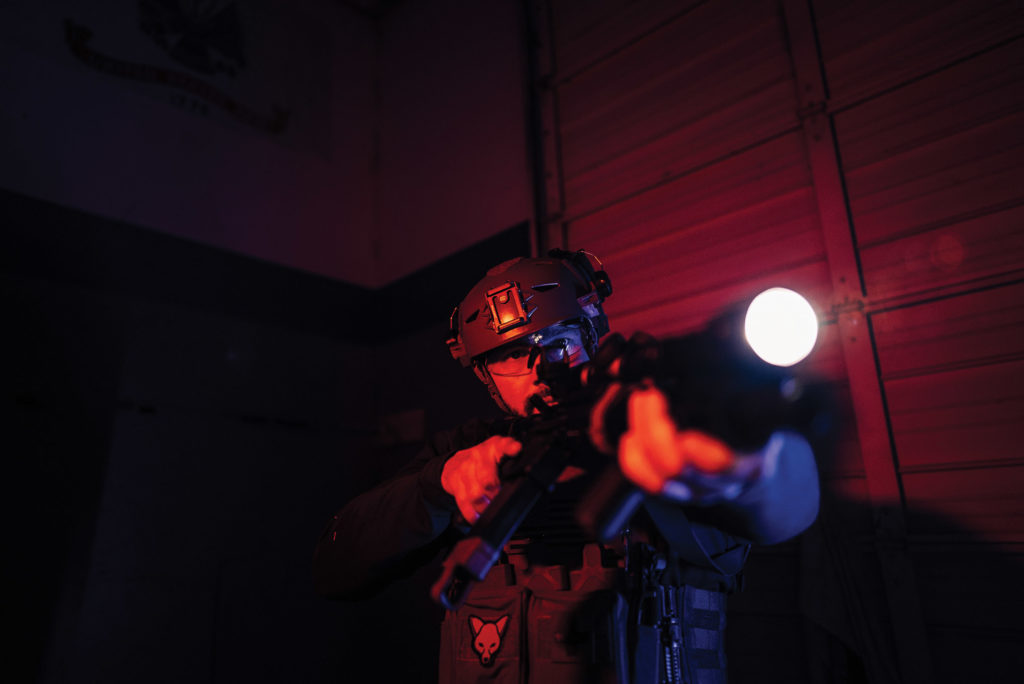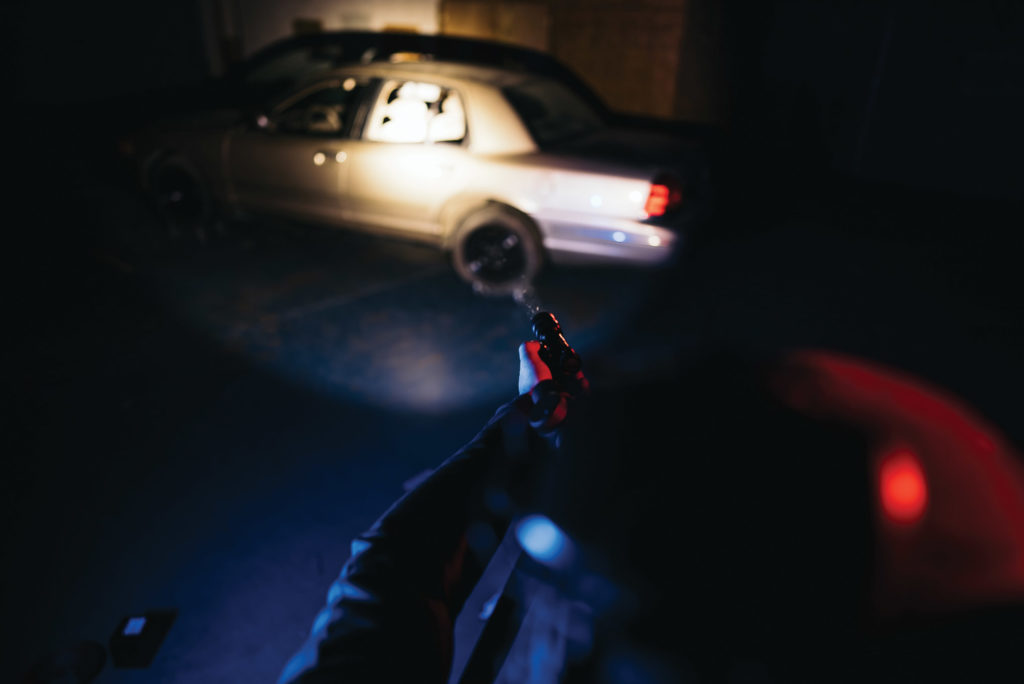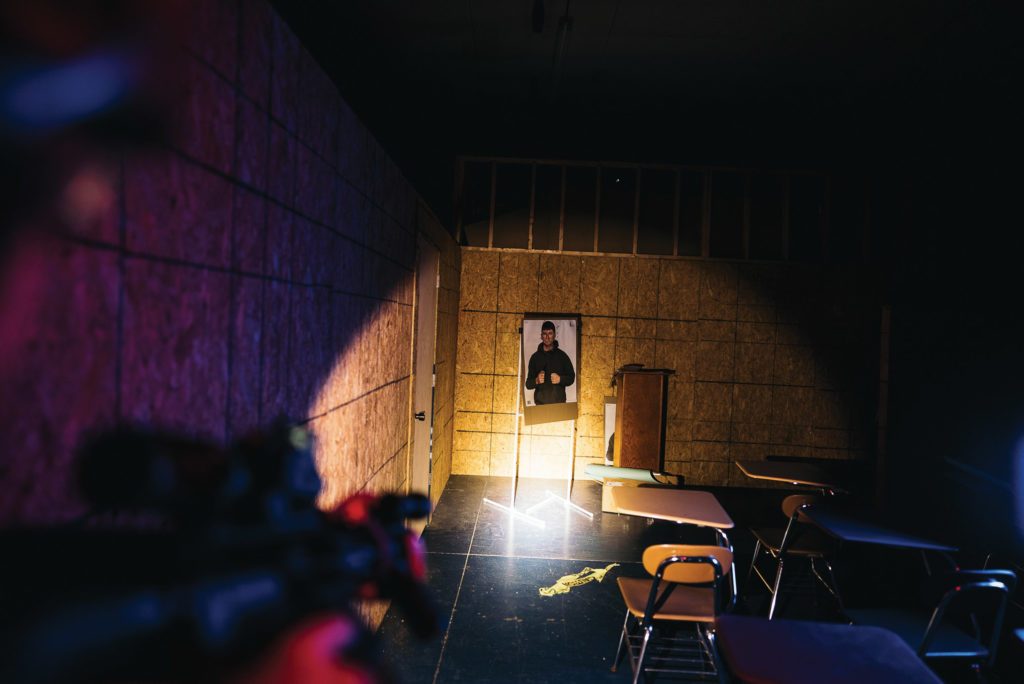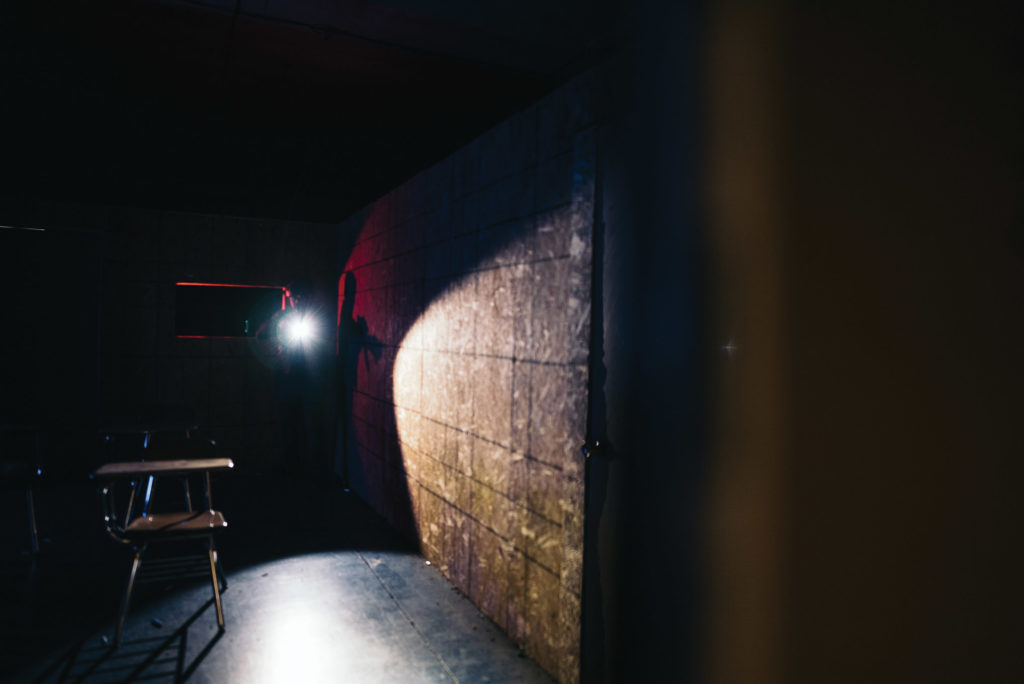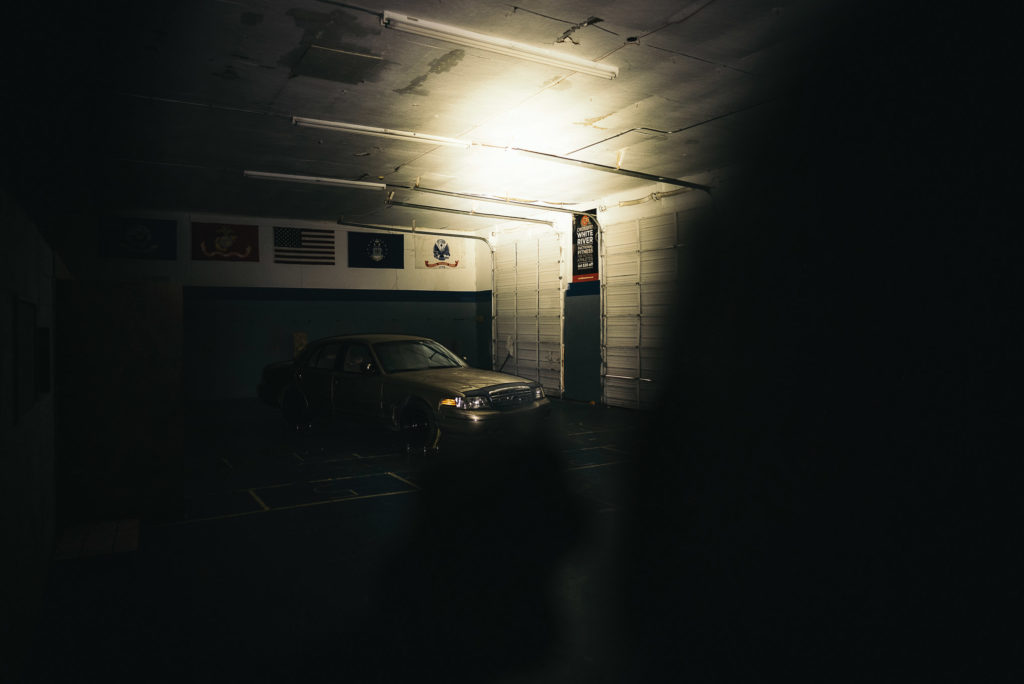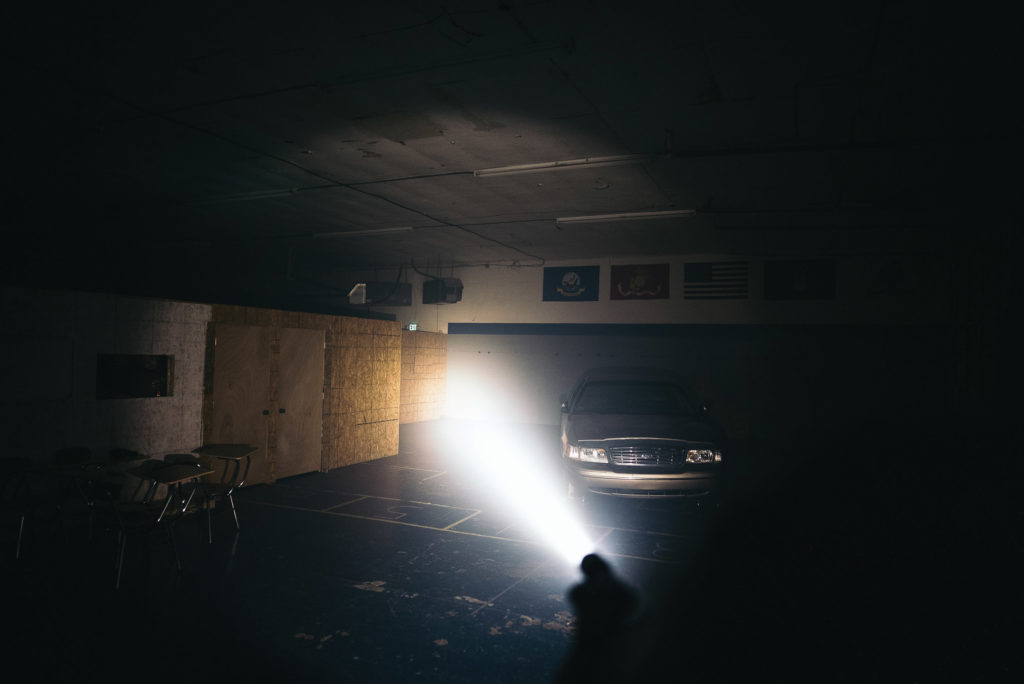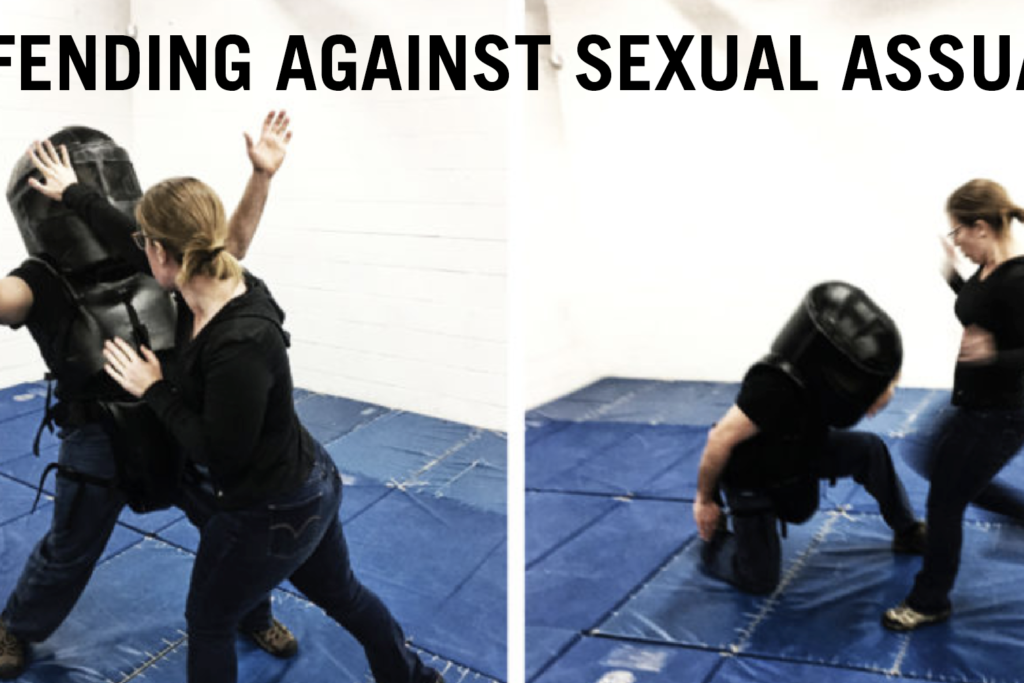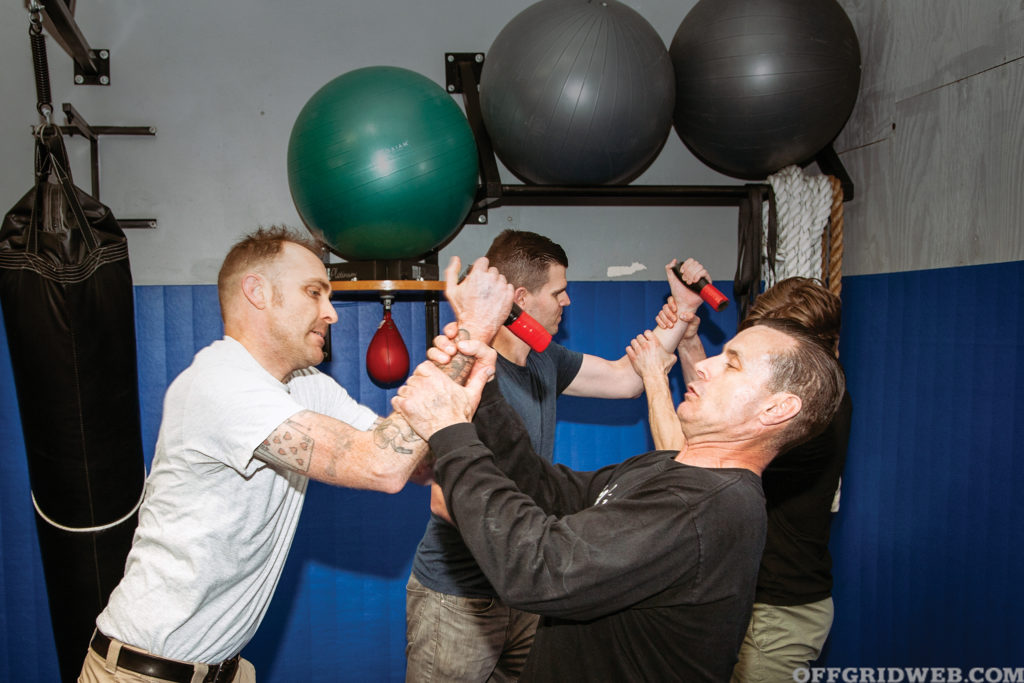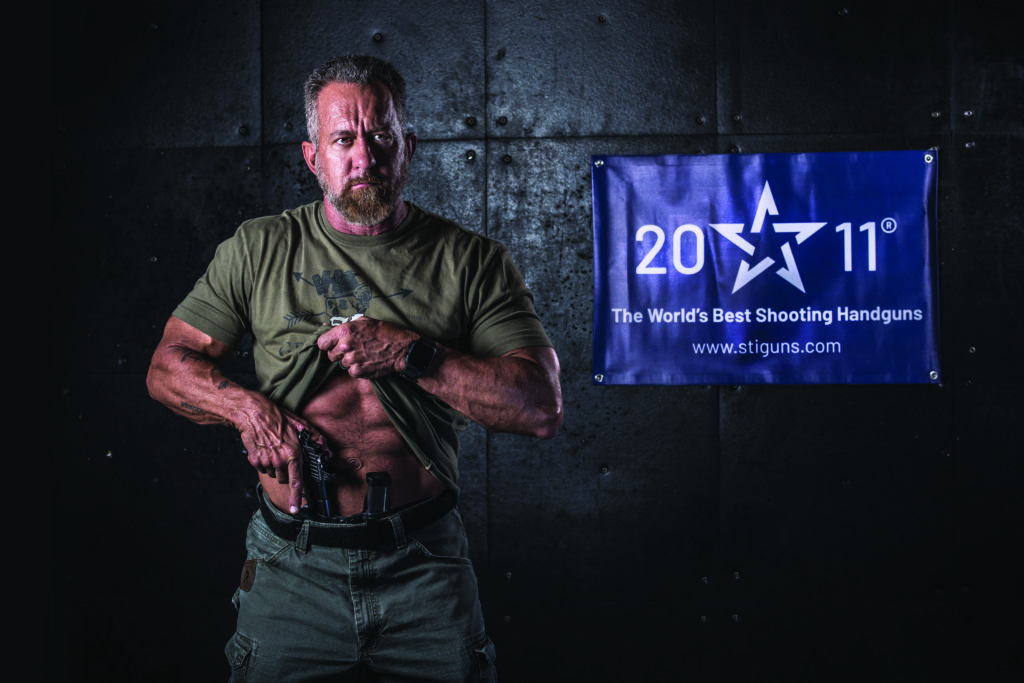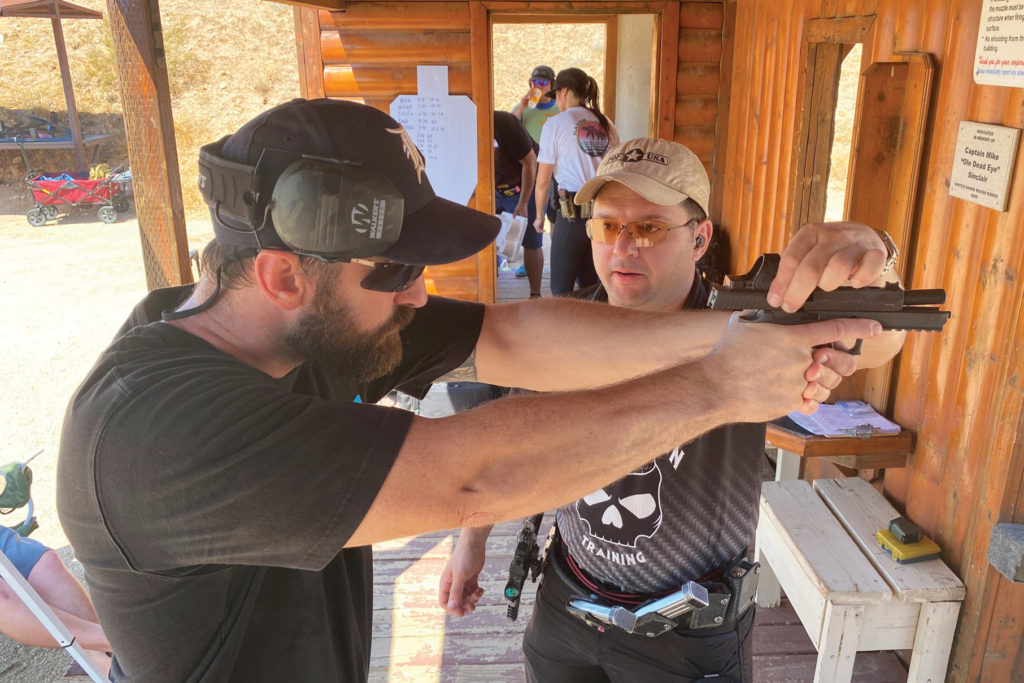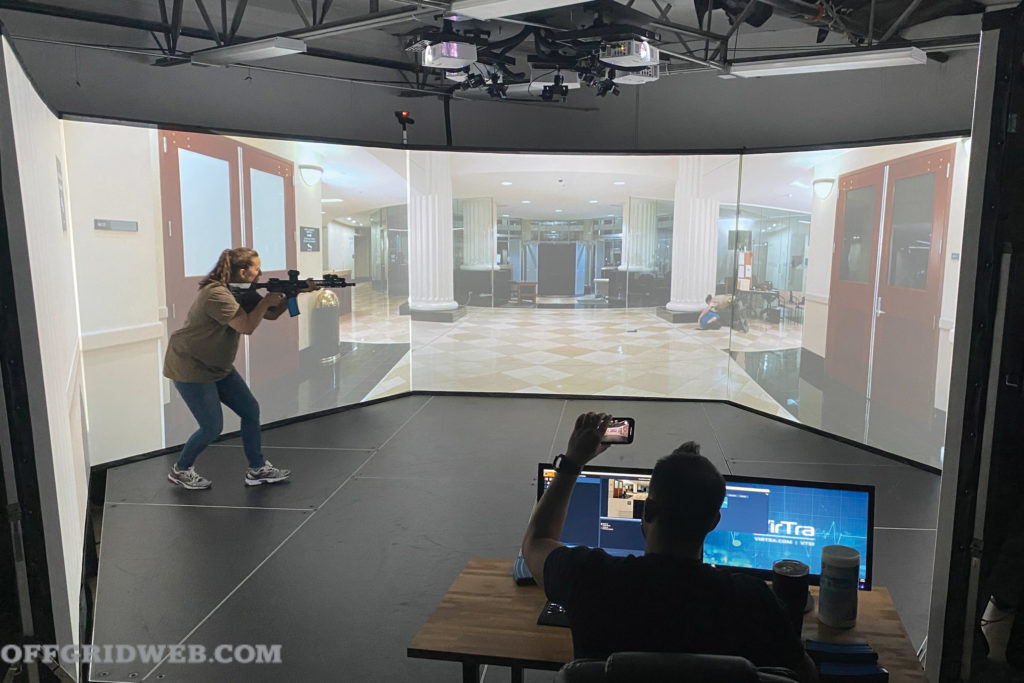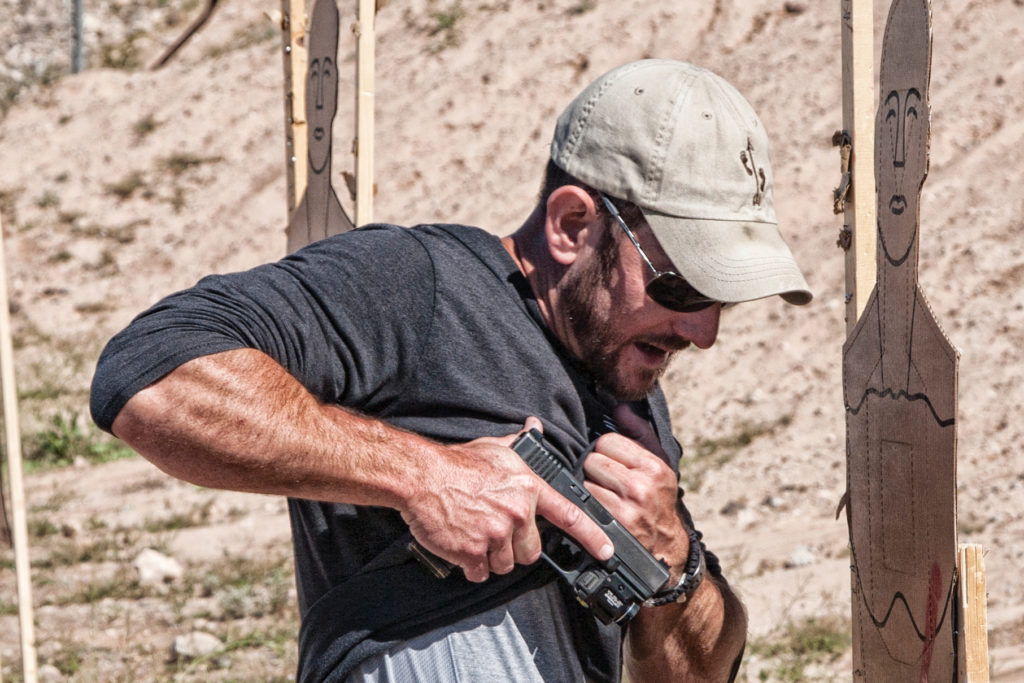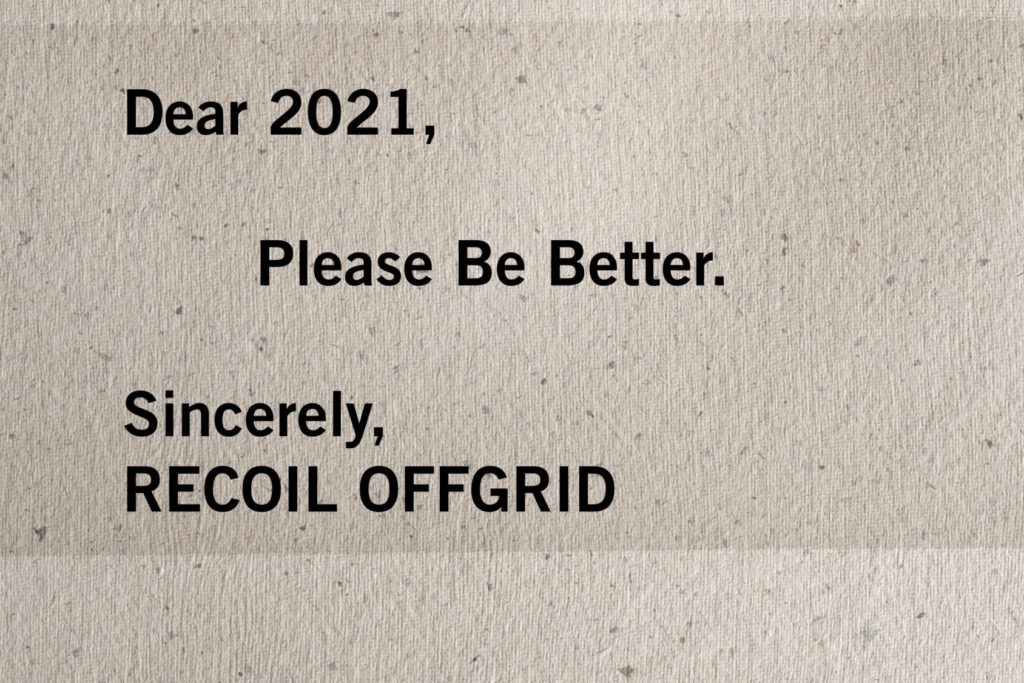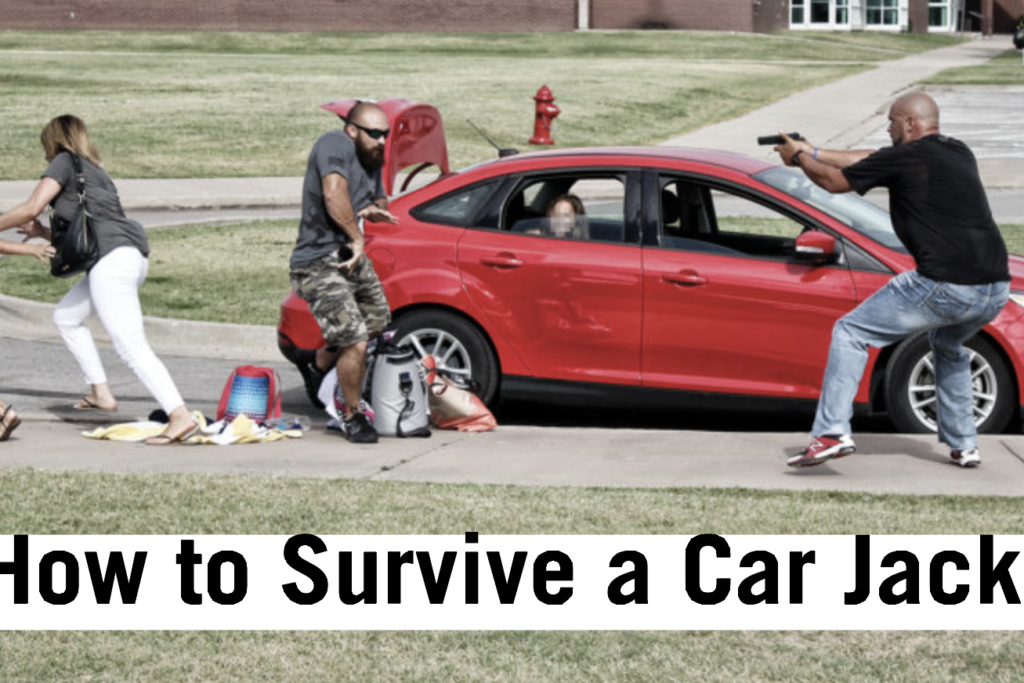Why do things go bump in the night? Why do werewolves change at the full moon? Why are vampires allergic to sunlight? The short answer is it’s easier to do evil deeds after nightfall. By the time the sun is completely down, most people are tired, relaxed, full-bellied from dinner, and getting ready for bed. There’s less light, generally less traffic (both vehicle and pedestrian), and it’s colder. If you have ill intentions, you’re unlikely to be seen and even less likely to be paid attention to. According to an article published by The Sleep Judge, based on 2017 crime reports from several selected cities, more than half of violent crimes occur at nighttime. We gleaned the following highlights from their data:
- 65 percent of murders and nonnegligent manslaughters (for the cities polled) occurred at night, with a peak hour of 9 p.m.
- 59 percent of rapes and sexual assaults occurred at night, with a peak hour of 12 a.m.
- Robbery, motor vehicle theft, and assault all have occurrence rates of 50 percent or greater at night, sharing a peak hour of 8 p.m.
The source article goes into more depth, but these tidbits give us some great context to discuss the importance of low light tactics. To get ourselves properly “enlightened” on the topic, we took a two-day low-light shoot-house course taught jointly by Don Edwards of Greenline Tactical and John Dufresne of Kinetic Consulting. Both are veterans of the 75th Ranger Regiment, and their combined backgrounds include executive protection, professional mentor/consulting experience, as well as time spent in Special Forces and Asymmetric Warfare Group. While they both teach a number of classes separately, they joined forces to teach a weekend-long class that dealt specifically with the use of white lights in enclosed spaces for self-defense and duty purposes.
Point and Click
Buying a capable flashlight (a term we’ll define in greater detail below) isn’t the end of your journey to combating nighttime vulnerability. It’s the beginning. This is a common misconception and one that even yours truly once fell victim to. But the first time you use your 1,000-plus-lumen flashlight to search your house and hit the bathroom mirror or a glass sliding door at face level, you’ll realize that maybe there are some nuances to white light employment. We learned a couple of techniques from the Greenline/Kinetic team that were very helpful for us in navigating the dark.
If you have a light in your hand, and if you’re searching for potential threats, it’s instinct to point your light directly at anything that may signify said threat. Furthermore, many historical “tactical” light techniques (Harries, Rogers, syringe, FBI, etc.) require the light be placed in line with the muzzle of your weapon (and therefore your eyeball). While the logic of that makes sense on the surface — putting maximum lumens directly in front of your eye’s light sensors — handheld and weapon-mounted lights have evolved to such high output levels that legacy techniques sometimes shortchange the end user of important capabilities.
Above: The power to punch through and around barriers (like windows and door pillars) is an important quality in any light, weapon-mounted or handheld, that will be used in a defensive context.
Baseboard Lighting
This technique is applicable to both handheld and weapon-mounted lights, but we’re going to focus on the latter for now. When searching a dark structure, it’s common practice to conduct your entire search with your weapon at full extension and either search through your optic or look through (or slightly over) your sights. If you have a pistol or carbine in front of your face when you turn on that light, target acquisition is easy since the light is directed parallel to the barrel of your gun, directly where you intend to put your bullets. But target identification can be hindered by two factors: having the weapon itself in your sight line, and having your light focused directly at the other person’s head/shoulders/upper thoracic cavity. Those are great areas to put bullets, but if you can’t see their hands, you’ll have a difficult time discerning whether or not they need to receive bullets. If the person’s hands are below their sternum, seeing them through or over the top of your sights will be impeded by your weapon, especially a carbine or shotgun, and you may not be able to determine if they’re holding a weapon or carrying one in their waistband. Furthermore, the configuration of your light could compound the problem. Some flashlights have a very intense center hotspot with little to no spill (residual light that surrounds the focused portion of the beam). If your light has high output with a very tight beam, you still may not see those hands or that weapon, even if you’re using a handheld light at eye level with no gun.
One of the solutions put out by Dufresne was what he referred to as baseboard lighting. As the name implies, you aim your light slightly below your eye line, aiming it at the baseboard where the wall in front of you meets the floor. This allows you to fully use your light’s beam pattern, both hot spot and spill. Even if your light has that really tight pattern, baseboarding will induce some reflection off of both surfaces (floor and wall) and scatter the light a little more evenly over a wider area. From the perspective of room searching/clearing, this also prevented us from having tunnel-vision through our red dot, and increased overall situational awareness when entering rooms with unknown threats inside. For those worried about reaction or engagement times, we found the change in weapon position to be very small — think holding the muzzle at shoulder height instead of eyeball height. This technique does not require a 45-degree SWAT-style low ready to work. In addition to lighting more of the immediate area more effectively, baseboard lighting has the added benefit of aiming the hot spot of your light directly at the waistline and lower abdomen of anybody you may find in front of you. So even if someone’s hands are down at their sides, they’re hiding one hand behind their thigh to hide a weapon, or they’re trying to get a weapon out of a pocket or holster, you’ll see it almost immediately.
Above: The “baseboard lighting” technique is an alternative to direct lighting that puts softer, ambient light on the target.
Umbrella Lighting
Opposite baseboard lighting is umbrella lighting. As the name implies, this technique involves bouncing the light over you. This could be shining the light straight up on the ceiling, or using a high corner to take advantage of the wall/ceiling junction. If you’re a hard-core high-ready gun carrier (pistol or carbine), this may be more natural for you than baseboard lighting.
We found this technique serves us especially well in two situations. One is using a handheld light in conjunction with a pistol. The other is trying to get an immediate picture of an entire room, particularly a larger one, as opposed to being engaged in a focused, methodical search. In both cases, holding the light at a temple index or even slightly behind our head and angling the light to a far high corner produced a great general lighting effect with the particular lights we were using. But light output, beam pattern, existing ambient light, ceiling height/angle, and room size will all affect your results.
A Note on Strobing
The idea of strobing your light, whether using a built-in strobe function or manually clicking your light on and off rapidly, seems to have cyclical recurrence in various professional circles. Dufresne and Edwards both advise against this technique. To paraphrase Dufresne, strobing or blinking your light during a room search is forcing your brain to take in data, process it, lose it, and then regain an altered set of data over and over again. If you or someone else in the room are moving quickly, the picture your brain receives is going to be different every time the light comes on, much like watching a stop-motion animation or low-framerate video. It also forces your pupils to constrict and dilate rapidly to compensate for sudden, severe, repeated changes in the lighting conditions. These combined factors can increase mental and physical fatigue, and decrease situational awareness, especially during multi-room or full-structure searches.
A Better Mousetrap
The science that goes into building a high-performance light could be several articles all by itself. But we had an opportunity during our class to speak with Sean McCauley, one of the owners of Cloud Defensive, who attended this class. We took a little time between shoot-house runs to pick his brain about some commonly tossed around light specs and what makes Cloud’s designs unique in the market.
Above: The effects of white light are both offensive and defensive. Not only does the light reveal your adversary, but it conceals you from them as well.
OFFGRID: Most tactical flashlights are marketed by the number of lumens they put out. More recently, candela ratings have been introduced into these conversations. What’s the difference between lumens and candela, and what do they provide for the end user?
SEAN MCCAULEY: For years, the flashlight industry has been engaged in a race to get more lumen output out of the flashlight. Technology has improved, and that’s great for the end user. But the reality is the manufacturers haven’t historically cared about the actual performance of the light. Rather, they engaged in a “space-race” for lumens and the users got the benefit of brighter and brighter lights. But for weapon-based applications, that’s not inherently valuable. And the biggest need of all from a weapon-mounted standpoint was never addressed until Cloud Defensive brought that conversation to the forefront. And that is the conversation about candela.
When you talk about weapon-based lighting applications, and in particular carbine-based applications, you absolutely have to understand three critical things: 1) The amount of light (lumen output) that comes out of the emitter itself is correlated to performance, but in no way does it guarantee usable light on target. 2) From a performance standpoint, what matters to the shooter the most is how much light is actually on the target. The candela rating gives insight into how far you will throw light downrange.
By definition, candela is a standardized measurement of light concentration. Think of candela as a function of focusing your lumen output so you can throw light toward a target rather than disperse it into the universe. The good news here is that we are having this discussion and weapon-mounted lights are now being judged based on how usable they are in weaponized applications. Bright lights are only cool if they work for you. “Can I see my target? Can I get Positive ID on this target? Is there enough usable “spill” around the hot spot on this light to ensure I am situationally aware so I can determine whether I am going to fire or not?” That is what a weapon light is supposed to do for you. A high candela rating gives you that capability. You can create usable spill from high candela, but you cannot create high candela from spill.
Let’s talk light temperature. Much less talked about, especially in technical terms, what is light temperature and how does it affect the end user?
SM: The temperature of the light coloration is an interesting conversation. We have this conversation because early LED technology was pretty poor by today’s standards. You may remember seeing bluish colored lights in the early days of the LED, which were a far cry from the warmer coloration of the incandescent bulbs we were all used to at the time. The difference was so pronounced that people to this day still desire that warmer color in a light. And for good reason — it’s superior. Most flashlight manufacturers choose light temperatures in the 5,000 to 6,500k range. Those are cooler, more whitish-blue lights. That 5,000 to 6,500k range gives the appearance of being brighter in certain applications. Again though, we are talking about weapon-mounted applications here and those cooler temperatures bring operational liabilities. So, Cloud Defensive uses a 4,000k light temperature for some very specific reasons.
Above: “Umbrella lighting” is another way to bounce light off a surface to light up a broad area instead of a point.
First of all, when you are talking about weapon-mounted lights, you are generally talking about using them in less-than-ideal environments. One of the most common challenges these lights face is everything in the atmosphere between you and the target, from smoke to dust to humid air. When there is particulate present in the air, it blocks the photons from getting to the target, and as such, these are often called photonic barriers. Some barriers are more defeatable than others. Light temperature absolutely dictates how your light will perform in these adverse conditions.
5,000 to 6,500k lights are whiter/bluer lights. While the photons still proceed downrange, the whiter nature of the light actually causes more disruption to the shooter because more of that bright white light is reflected back at you when it hits photonic barriers. If you need a practical example of this, think about running your high beams on your car in thick fog. The high beams create a lot of disruption to the driver in that instance. Not unlike what happens when you “white-wall” yourself with one of the 5,000 to 6,500k lights in a shoot-house environment. It’s problematic. Our 4,000k temperature solves this issue. It allows the shooter to better defeat those photonic barriers. It pushes the light downrange and is significantly less disruptive to the shooter while being incredibly punishing to the target. (Editor’s note: To continue the automotive example, this is why many cars have warm white or yellow-tinted fog lights.)
Another fun fact about the 4,000k range LED is it will better defeat other lights. And weapon lights absolutely have to be able to defeat other lights. Maybe you are in a dark room and need to push light through a bright space into a different dark room. Or perhaps you are on the street and need to push light through a streetlight (very challenging, by the way) into a window of a dark house. Those are times when your light coloration and your candela rating will either save you or render your light unable to perform in that critical moment. 4,000k is better in those situations. And that statement is absolutely demonstrable. 4,000k is also far superior when you need to defeat tinted glass on vehicles as well. It punches through in ways the 5,000 to 6,500k lights do not, and again is less disruptive to the shooter.
One other very useful benefit to 4,000k is that it helps your human eyes distinguish colors from longer distances. So, if you need to be able to tell a blue sweatshirt from a green sweatshirt at, say 200 yards, the 4,000k is going to better help you do that. Why do other manufacturers use 5,000 to 6,500k? Because it’s the way it has always been done, and dogma is powerful. Cooler light temps also appear brighter at times. But 4,000k is just flat-out a better performer for weapon-based applications, and Cloud is absolutely leading that charge.
Tools of the Train(ing)
This class was held at the Midwest Threat Assessment Center (MTAC) in Muncie, Indiana. The facility itself is one of the better-designed shoot houses we’ve ever seen, outside of military and law enforcement training compounds. It’s not live-fire rated, and runs entirely on Universal Training Munitions (UTM) marking rounds. MTAC has rental gear available, but we were able to get a replacement AR bolt and some ammunition directly from UTM for this purpose. A UTM-only shoot house offers two distinct advantages. One is that it’s ready for force-on-force training to pressure test tactics and techniques. But our course didn’t involve any force-on-force. It was strictly marking cartridges on paper. This is a great risk reducer and confidence builder for teaching less-experienced shooters complex skills like clearing rooms in multi-man teams. Shooters can be introduced to advanced problems like CQB and vehicle-based tactics, with a less-than-lethal penalty for poor marksmanship under stress. Since this is an indoor shoot-house, we were also able to practice low-light searches without having to wait until the sun went down.
As previously stated, Cloud Defensive was on-site as a sponsor of this course. They brought enough samples of their new REIN weapon lights that every student in the class could test drive one against their current lights, and also speak with two of the owners about what makes Cloud’s products unique. We took full advantage of the opportunity and ran a REIN all weekend, sometimes testing it against our handheld from another brand. The benefits of the REIN, and of Cloud’s approach to building lights, became immediately apparent. We hope Cloud offers this opportunity to their consumers more often going forward. Shining two lights against a wall is one thing. But getting to see how they perform in total darkness, mixed lighting, through fog, and in varied confined spaces, allows a thoroughly informed decision to be made.
Many companies offer a lot of different beam patterns, from flood to spot to everything in the middle. Is one better than the other for certain tasks, or is there a ratio of spot to spill that you prefer?
SM: Beam patterns, ratios, lumens, lux, and candela numbers can get complicated fast. And if you ever want to glaze somebody’s eyes over, start talking about reflector design and the physics involved there to get what you want. The real key here is to not get too lost in those weeds, but focus on the big points and frame it in a way that is applicable to your needs.
Beam patterns absolutely matter. But the ideal is 100-percent dependent upon what your need is. There is no one-size-fits-all beam pattern in the world of flashlights. The flashlight on your iPhone has no light concentration. It’s just an LED that is used as an admin light. Handy when you lose the remote in the couch at night. Not so much if you are trying to look 150 yards down the road in search of your lost dog. So, lights need to be thought of, generally speaking, as specialized tools. That’s not to say a handheld light can’t try to offer the best of both worlds. Some have multiple output levels. Some have adjustable beam patterns. And some just try to strike a nice balance of capability. There is an argument to be made for all of those designs.
Above: Beam pattern and reflector design will determine how your light “behaves” when using tactics like deep-corner lighting to light up a large, open space.
With a weapon-mounted light, the debate becomes more focused. Your performance goal with any weapon light is to put as much light on a target as you can, and to have enough usable spill around that target to be able to maintain situational awareness.
As we’ve discussed, there are a few variables that impact your ability to do that. As a rule, you need to favor higher candela-rated lights. Anything under 50,000 candela on a rifle-mounted light is not going to push light out to rifle distances. But a weapon light with high candela at the expense of spill is not inherently useful. It doesn’t do much good to see the bad guy at 100 yards but not see his buddy 10 feet away because your light is more like a laser beam. So as a rule, you need high candela rating and high-enough lumen output that you get adequate downrange performance with both light concentration on-target and enough surrounding light for situational awareness. That’s the gold standard.
[Photography by Real Dirty Media.]
Sources
Midwest Threat Assessment Center > mtactraining.com
Cloud Defensive > clouddefensive.com
Kinetic Consulting > kinetic-consulting.net
Greenline Tactical > greenlinetactical.com
The Sleep Judge > thesleepjudge.com/crimes-that-happen-while-you-sleep/
More on Surviving the Dark
- How to set up your Rifle for Low-Light/No-Light Conditions.
- Night Vision 101.
- GBRS Group: Shadows that Bite.
- Night Vision Helmet Setup Guide.
- Sionyx Aurora Pro: Color Night Vision Review.
Related Posts
The post Handheld and Weapon Mounted Light Techniques appeared first on RECOIL OFFGRID.


